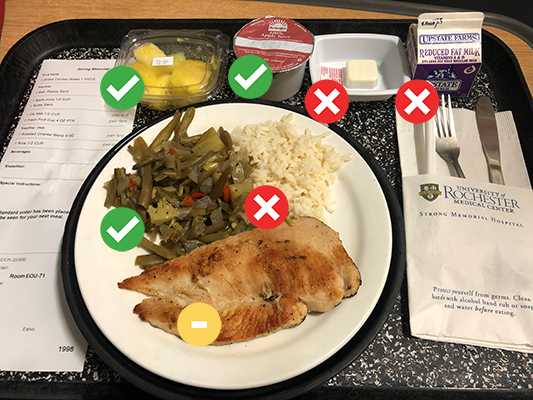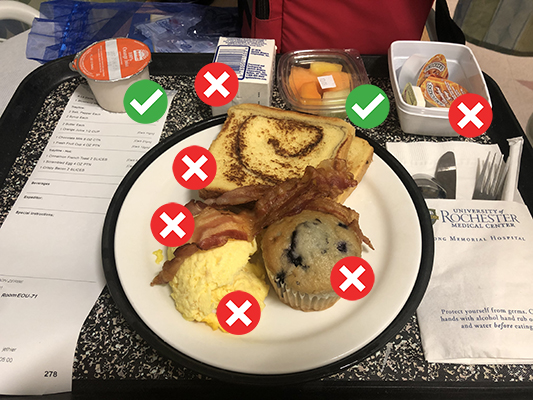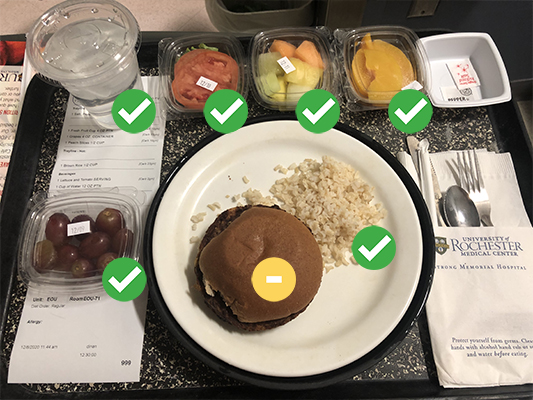A few weeks ago, on a Friday night, I started watching The Queen’s Gambit. A great Netflix show about a world chess champion. But shortly into the first episode, I noticed some pain in my left abdomen. It crept up quickly and after about 15 minutes, it was so painful that I could barely walk. I made my way down my apartment building’s stairs and out to my car. I had just enough energy and mobility to drive myself to the emergency room. Unfortunately, when I got there, there were many other patients with even more dire conditions than mine waiting to be seen which makes sense because of the COVID-19 pandemic. But after checking in and being curled up in pain inside the waiting room, I was finally seen by a doctor after about 2-3 hours just as the pain subsided. Despite the pain now being gone, my emergency room doctor still sent me for x-rays, blood tests, and urine tests. The result? Suspected constipation and gas accumulation which can be known to cause a lot of pain. How embarrassing… so, at around 5am, I left the hospital to return home, exhausted from not sleeping and in need of some stool softeners and MiraLAX.
But Saturday and most of Sunday passed with normal bowel movements and I became slightly skeptical of the diagnosis. Constipation can occur for many reasons but most of the time it’s a lack of exercise, lack of fiber, or medications that cause it. But I’d exercised every day that week, consumed 80g of fiber per day (3x the American Heart Association’s recommendation), and wasn’t on any medications. Despite that, the pain returned Sunday night around 11:30pm just as I was heading to bed. This time, the pain was worse, I sucked it up and rolled around in agony on my floor for four hours before falling asleep. I was able to sleep for a few hours before waking for Monday morning’s workday. I showered, made breakfast, and then there it was. Again. And worse. Even if it were constipation, I couldn’t bare it anymore. So, in great pain and extreme annoyance, I rushed back to the emergency room needing help. This time my stay there was for over 24 hours before they finally diagnosed my issue correctly.
But during those 24 hours, I started to realize the many competing priorities hospitals had, other than my health and recovery. Let’s talk about hospital food and nutrition.
Typical Hospital Food
Hospitals are usually busy, and with the current pandemic, they can be packed. To deliver meals to every one of those patients, hospitals need to prioritize efficient meal delivery. This means providing meals that are cheap and affordable, efficient and quick to prepare, and are well-received and tasty. This is what allows them to deliver thousands of meals per day without a lot of complaints. But at what cost? Usually, it comes at the cost of nutrient density, food quality/freshness, and individual’s needs/requirements. A study using the Nutrition Environment Measures Survey criteria found that only 7% of hospital meals could be considered healthy. And another study showed that only 25% of hospitals followed nutrition standards when developing the food offered at their cafeterias. In a world where poor nutrition is one of the leading causes of hospitalizations, hospitals do little to treat the cause and a lot to mitigate the symptoms.
But it’s not just the hospital’s cafeteria that is the source of unhealthy food, 20% of hospitals have fast food restaurants inside them. This number rises to about 30% in children’s hospitals. And nearly all of them have vending machines packed with soda, candy, and junk food. These unhealthy food sources not only significantly increase the chance that patients eat unhealthily, but it provides patients with a belief that fast food and vending machine food are healthy. I mean, if these foods are in hospitals, shouldn’t they help and not hurt the patients consuming them? I saw a study that said one meal of fast food a week increases one’s chances of dying from coronary heart disease by 20%. This number increases to 50% with two or three meals. And these meals are available to those same patients in the hospital suffering from heart disease? Yes, that’s the crazy part.
My Hospital Food Experience
But those are just numbers and studies, what about my experience? Luckily, the hospital I was at didn’t offer fast food. And when I finally got to see their menu, there were some “ok” options available if you looked hard enough. But I didn’t get the option of ordering from the menu for two out of my first three meals. During the first and second menu calls, I was out for testing and they delivered me the default meals for dinner and breakfast. So, what did I get as my default meals for a patient suffering from constipation and gas?
Dinner
For dinner I received a mixed meal that I wouldn’t consider that healthy. When I received this meal at the hospital, I Googled each food item to see whether it was good or bad for constipation and here’s what I found. I received pineapple, apple juice, and green beans which all appeared good for constipation. Generally, I wouldn’t consume juice as it’s stripped of the fiber and nutrients normally found in an apple, but for a hospital meal I was ok with it. Then there was chicken, which I didn’t consume, but wasn’t necessarily bad or good for constipation. Let’s call it neutral. And finally, there was white rice, milk, butter, and salt packets which were all known to cause constipation and gas build up. Doesn’t it seem odd that I’m being served food that can cause the exact issue I’m at the hospital for? Now obviously they can’t have a dietician on staff that hand selects each meal for their patients depending on their condition, but white rice, milk, butter, salt… There’s almost no reason anyone should consume added butter or salt. So why is it included in the default meal for all patients?

Breakfast
Did I fare any better for my next morning’s breakfast? I may have been served dessert. Again, there was some juice and fruit which were good choices but there was also more milk, butter, and salt. They did serve scrambled eggs which isn’t the worst option but isn’t recommended for someone with constipation. But, on top of that was cinnamon french toast, bacon, and a blueberry muffin. In what world were these good breakfast options for anyone hospitalized whether they’re suffering from constipation or heart disease and cancer (the two leading causes of death by far)? It’s quite baffling.

Lunch
Luckily, I was available to input a request for my third and final meal. And this time, I wanted to be sure it was a healthy one. A woman started off by reading me the lunch options being served:
- Beef Stroganoff
- Stuffed Shells
- Chicken Fingers and French Fries
- Hamburger, Cheeseburger, or Hot Dog
- Ice Cream and Apple Pie
And those were all the options she read off. I couldn’t believe it. So, I asked her if they had any whole foods plant-based options to which she excitedly said she could get me a black bean burger and rice. Great, and when I asked if they could make it brown rice (for the added fiber) she said yes again! How about some fruit? She read off three options and I said I’d take all three! And swap the milk for water! And finally, I received a fairly healthy meal to help with my recovery. Although this isn’t the fresh salad, soup, or chili I was hoping for, it was better than the hot dog, french fries, and the apple pie initially offered. But why did I have to dig to find the healthy options? Shouldn’t the healthy options be the default? Shouldn’t we make it so patients must ask specifically for unhealthy options if they’d like to go that route? It’d be nice but I was thankful with what I got.

Prepare Your Order Before Asked
Throughout my visit, I took notes on the entire process as it was all new for me. And although I don’t plan on being in the emergency room again anytime soon, there were a lot of lessons I learned. Lessons that’ll prepare me for the situation if it ever happens again and lessons that may be helpful for many others. In regard to nutrition, I’ve identified two key findings.
1.) Hospitals will default you to efficient, cheap, salty, buttery, fatty meals. These are the foods that make up the Standard American Diet and are welcomed by most. But these are the meals that get people to the hospital in the first place. I’ve since gone to the hospital’s dining webpage for more information and I see their health and nutrition is promoted all over the site. Here’s a headline quote from the page.
We are committed to health and nutrition so we offer at least one menu item that fits into our Be in Balance program.
Cafe 601 at Strong
But their commitment goes only as far as one meal. A meal that I had to dig to find on the long menu of items that don’t fit their “Be In Balance” program.
2.) Hospitals have healthy options available if you’re looking for them. Fortunately, hospitals are aware of this issue and do offer healthy options. In my case, when I asked for vegetables, fruits, and whole grains they were available. And the woman who took my order was not only happy to help, but eagerly suggested healthy alternatives. These options are not popular which is why they aren’t easy to find and why the health of most Americans is so poor. But they’re available. And if you take the time to review the menu and discuss the options with the hospital staff, you’re much more likely to receive a meal that not only helps get you out of the hospital but helps prevent you from getting there again in the future.
Final Thoughts
Hospital cafeterias have transformed to offer the same food found in the Standard American Diet. Sodas, candy, fast food, processed food, added salt, added sugar, and added fat. And this is because these foods are cheap to make, easy to distribute, and well received by patients. In some ways, it makes sense that hospitals offer these meals. They’re easy. But they’re the same meals that forced most of us to the hospital in the first place. The good thing is there’s usually one item on the menu that’s healthy. An item that’ll help you heal and recover faster. And an item that’ll help prevent you from being in the emergency room in the first place. But it all comes down to preparation. Read through the menu. Talk to the hospital staff. And put together a personal plan for you to become healthier and happier.
Are you looking for recipes and meal plans that prevent disease, disability, and death?

Hey, I am Brandon Zerbe
Welcome to myHealthSciences! My goal has always been to increase quality-of-life with healthy habits that are sustainable, efficient, and effective. I do this by covering topics like Fitness, Nutrition, Sleep, Cognition, Finance and Minimalism. You can read more about me here.
Sources:
